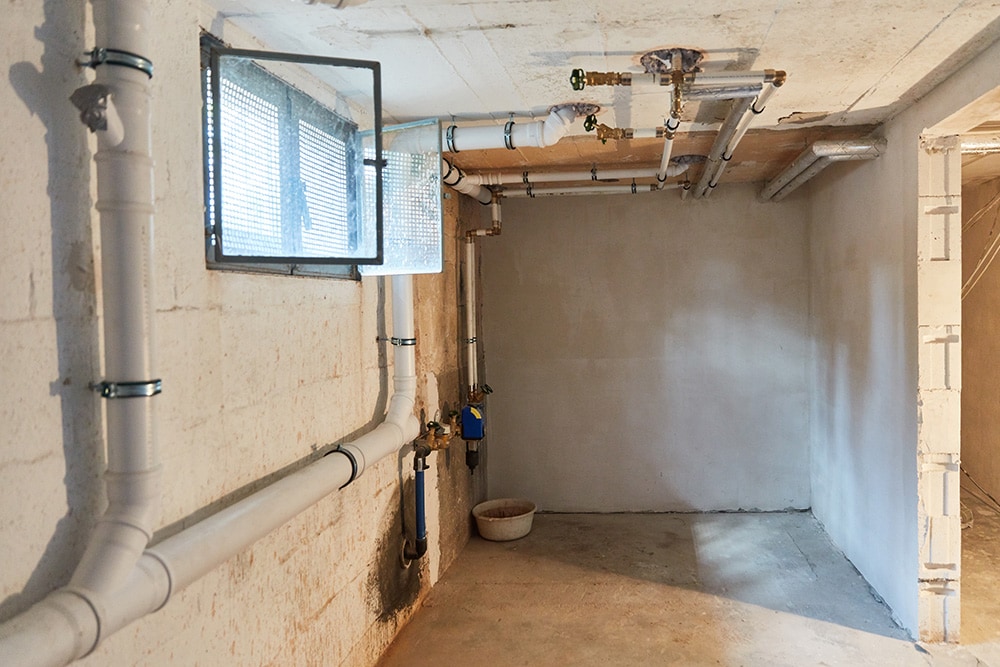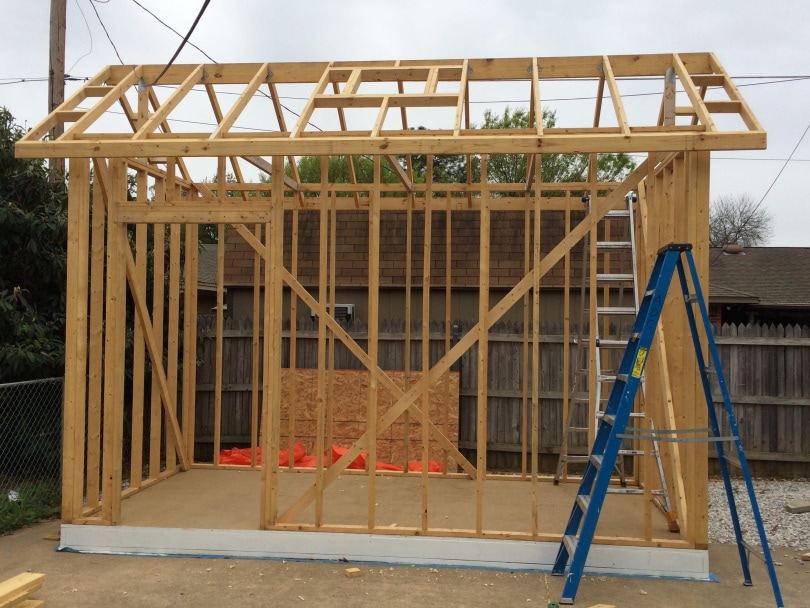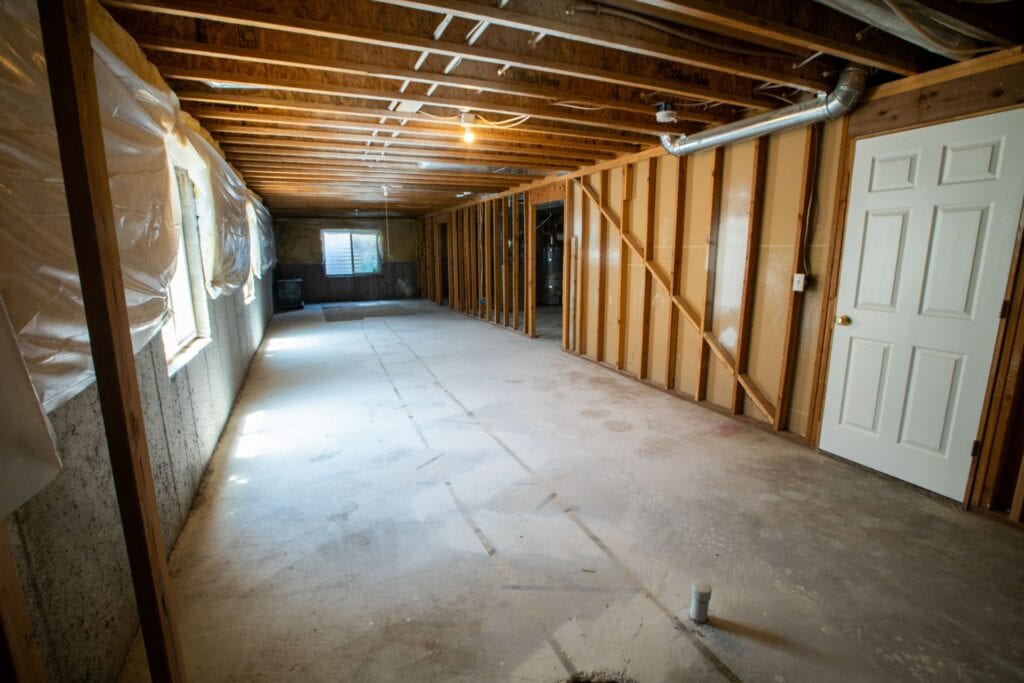8 Areas Where Your Home Loses the Most Heat
-
Jeff Weishaupt
- Last updated:

Do you struggle to keep your home warm on colder days? If yes, you should check your home’s insulation system. Mainly, homes with improper or poor insulation experience significant heat losses.
Of course, you can’t crank up your thermostat all the time, as it can add a lot to your energy bills. So how can you retain heat in your home?
First, you must identify the areas contributing to heat loss. But before you begin, know that no two homes are the same, and your problem might differ from your friend’s. So, don’t rely on what someone tells you, and inspect your home on your own.
Whether you do a DIY home audit or get help from a professional, some areas in your home are known to be the biggest contributors to heat loss. How much heat is lost in these different areas? Let’s find out.
The 8 Areas Where Your Home Loses the Most Heat
1. Door and Window Cracks
Even if you can’t see it from a distance, your home’s doors and windows have numerous tiny holes and cracks contributing to heat loss. Despite being unnoticeable, these gaps can result in 38% of the heat loss, making them the most vulnerable areas in your home.
In fact, if you have a 1/8-inch crack under your 36-inch-wide door, it’s expected to lose the same amount of heat as a 2.4-inch hole in a wall. That’s massive.
To identify these tiny cracks in your door and windows, you might need the help of an expert, as they aren’t visible to the naked eye. Once you spot them, you should seal them immediately with foam or caulk. It’s recommended for fixed parts of your windows. For moving areas around your doors and windows, weatherstripping is the best option.

2. Basement Walls
Your home’s basement walls are the second most prominent area for heat loss, contributing to 20% of the total loss. Poor insulation and improper construction are the biggest culprits behind this.
To fix this issue, install adequate insulation around the basement walls. If they are made of cement, finish them out. During the process, you’ll have several options to improve your home’s insulation.
If you’re adding new insulation to your home, keep an eye on R-value or thermal resistance to know the efficacy of each. It indicates how easily insulation loses heat.
You can use concrete blocks, blankets, reflective foil, foam board, or fiber as insulation materials. If you have gaps or crevices in your basement’s vent holes, duct, or plumbing, use the spray foam all over them.
3. Framed Walls
Framed walls contribute to about 17% of the total heat loss in your home. It’s normal for different types of insulation to wear off or lose their effectiveness with time. That’s when you should upgrade them.
Framed walls may also lose heat due to direct contact with various surroundings. To know whether or not your home’s framed walls need more insulation, you can follow these steps:
- First, choose a power outlet on any exterior wall.
- Now, cut off the power to that outlet and remove its cover.
- Inspect the outlet and check the type and intensity of the insulation. Knowing the insulation type will help determine if you need to increase its R-value or replace it.
If you suspect a problem with the framed walls, consult a professional before taking the project as a DIY. This process strictly requires an expert to do the job.
The professional will likely give you different options to choose from. These could be renovating your home or adding loose fill or blown-in spray foam, mineral, cellulose, or fiberglass insulation to the existing walls.

4. Windows
The next culprit is your home’s windows. Since they’re made of glass, they are poor insulators of heat. That is why you feel colder when standing close to a window. At large, windows contribute to 16% of the total heat loss from your home.
If your home audit detects heat loss through windows, you can install triple-glazed panes or storm windows as a solution. They might not fix the issue entirely, but they can significantly reduce the loss by 10–20%.
You can also take it as a DIY project and install plastic sheets on your windows. On colder days, these sheets will reflect the heat in your home. Meanwhile, they prevent heat gain on warmer days by blocking heat from passing through the window’s glass. You can easily install them with a hair dryer.
As an easy fixture, you can use curtains or drapes on the windows to limit heat loss. But if you’re not in the mood for a DIY project, simply get your windows replaced with new Energy Star-rated ones.
5. Ceilings
About 5% of your home’s heat is lost through the ceiling. In most homes, the attic has all the pipes, vents, and ducts. If you identify these areas as problematic during your home audit, seal them as soon as possible to avoid additional heat loss.
To add more insulation, measure the thickness of the attic’s insulation. You will need more insulation if the thickness is less than 8 inches of cellulose or 11 inches of wool or fiberglass. However, if the thickness measures above these figures, you might need to add insulation to the attic’s main door.

6. Doors
It might come as a shocker, but doors are the least contributors to heat loss in your home. Only 3% of your home’s total energy is lost through them. But remember, a little goes a long way.
So, if you suspect doors are where your home loses some of its heat, you should get them replaced with new ones. Of course, we are not talking about gaps or cracks in the door here since you already know how to fix them. It’s about taking the whole area as the cause of the problem.
The best insulating doors are fiberglass and steel ones. Never opt for glass ones, as they are poor insulators. The same goes for wooden doors. No matter what type of door you choose, be sure it’s Energy Star-rated.
7. Basement Floors
Although only 1%, your home’s basement floors also contribute to heat loss. If you have a big house, these areas can significantly add up to the energy loss. Luckily, there are multiple ways to insulate the basement floor.
The basement floor in most homes is made of concrete. So you can install a carpet or tile over the flooring. But if it doesn’t give you the desired results, you can attach wood sleepers to the basement floor, use foam to fill the gaps, and apply a flooring product to finish it.
Another way to add insulation is to cover the floor with solid foam insulation and add multiple layers of plywood. Then, use a finishing product to seal it off. But, again, if you have never done these fixes before, it’s better to take help from a professional.

8. Recessed Lights and Electrical Wires
Last but not least, tiny openings on your walls or ceilings, such as those for recessed lights and electrical wires, can also contribute to heat loss. If you suspect hollow openings on your walls, you can fix them by installing electrical switches and gaskets. Spray foam also prevents energy loss from wire outlets and inlets.
 Conclusion
Conclusion
Heat loss is a major concern for many homeowners that worsens on colder days. To prevent heat loss from your home, you must identify its primary cause: poor insulation. Whenever you suspect the issue, immediately consult a professional for a thorough home inspection.
The eight most common areas where your home loses the most heat are cracks in the doors and windows, basement and framed walls, windows, ceilings, doors, basement floors, and recessed lights and electrical wires.
Make sure you’re not missing any other area of your home. Get all of them fixed before this winter season!
Featured Image Credit: Robert Kneschke, Shutterstock
Contents
